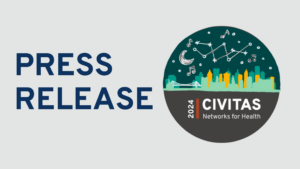Consideration 6

6. Staff required for OSCTC
Sample collection staff
Consideration
Sample collection requires a mix of clinical and administrative staff which may vary depending on the type of test administered.
Consider having a site manager to keep things organized.
Voices from the Field
Initial registration / screening staff
Consideration
Registration may be the most time-consuming process when considering staff time.
Collecting the right information and communication preferences from the patient up front can help build efficiencies.
Voices from the Field
Marketing / public education staff
Consideration
Staff charged with marketing and education are needed to ensure the public is aware of the OSCTC.
Voices from the Field
Customer inquiries staff
Consideration
A central communication platform can build efficiencies.
Voices from the Field
Staff who orders tests
Consideration
Standing orders may alleviate provider burden and improve access, particularly in areas that require testing of out-of-state residents or have high rates of medically underserved persons.
Consider the level of licensure needed to order a test. In some states, pharmacists can order tests.
Voices from the Field
Staffing for patient notification of results
Consideration
Ensuring test results get back to patients can be labor intensive.
Voices from the Field
Public safety officials
Consideration
Police, EMS, and other public safety personnel can be helpful in managing aspects of your OSCTC.
Voices from the Field
Community members and volunteers
Consideration
Tap into volunteer networks to reduce costs and minimize staff burden, particularly for administrative tasks.
Furloughed clinical volunteers may no longer be available.
Medical schools, or others providing clinical education, may be a source of staff for OSCTCs.
Voices from the Field
Licensure needed for sample collection
Consideration
Staffing with the lowest level of licensure can save money.
Different states have different requirements around required staff licensure.
The type of test administered can also impact staffing requirements.
Voices from the Field
Health center staff availability
Consideration
With many clinics back up to pre-COVID clinic volumes, and with additional staffing needs within clinics for screenings and cleaning, staff resource pools may no longer be able to support OSCTCs.
Testing sites need to transition to longer term staffing solutions, which may include hiring new staff.
Frequent changing of OSCTC staffing may result in reductions in quality and efficiency.
Voices from the Field
Using contractors
Consideration
Contracting out the staffing for OSCTCs in some cases may be cost effective and appropriate.
Contractors may also bring a fresh set of eyes to your OSCTC and identify some efficiencies.
Contracting with organizations that manage multiple aspects of COVID-19 testing, compared to contracting with multiple organizations managing distinct areas, may build efficiencies.
Voices from the Field
Off-Site Testing Toolkit Navigation Menu
Off-Site COVID-19 Testing Project home page
– – –
Off-Site COVID-19 Testing Toolkit home page
1. Identify and prioritize the population to be tested
2. Identify and mobilize your partners
3. Determine the type of OSCTC
4. Offer the right type of test
5. Adapt to variations in laboratory capacity and turnaround time
6. Staff Required for OSCTC
7. Build efficiencies into your OSCTC
8. Promote positive patient experience and community awareness
9. Address potential patient access limitations
10. Manage patient results
11. Plan for weather extremes
12. Provide PPE to staff
13. Financial viability/ sustainability
14. Explore a broader role for your OSCTC
Methodology
Additional Resources
Acknowledgements

